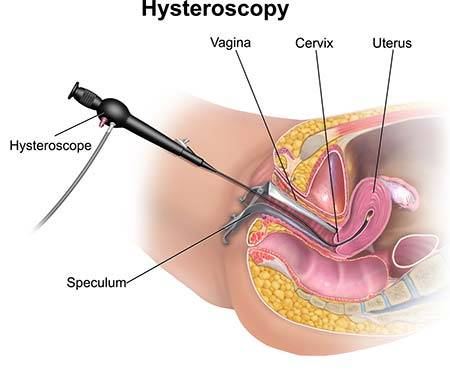A hysteroscope is a thin tube with a light on the end that can expand. Surgical instruments can be passed through a hysteroscope. Your OBGYN can use the device either as a diagnostic tool — that is, to aid in an examination on the way to making a diagnosis — or as a functional tool to aid in a surgical procedure. Hysteroscopy refers to any procedure, diagnostic or functional, for which your gynecologist uses a hysteroscope.
While similar to a laparoscope, the hysteroscope is designed to be used inside your vagina and uterus. When gynecologist Dr. Zelmanovich uses a laparoscope to examine the outside of your uterus, that's laparoscopy — hysteroscopy is when your local doctor or Dr. Zelmanovich, gynecologist in Midtown uses a hysteroscope to examine the inside of your uterus. In fact, your OBGYN can use both devices at the same time to look at the inside and the outside of your uterus and get the full picture.
Diagnostic Hysteroscopy
Even with a speculum in place, Dr. Zelmanovich, Midtown gynecologist may have a difficult time seeing all the way past your cervix into your uterus. A lighted hysteroscope makes the process easier. Because the device expands, your doctor can probe as needed to make a thorough visual examination. Reasons for a diagnostic hysteroscopy include:
- Abnormal bleeding, especially after menopause
- An abnormal Pap smear result
- Uterine bleeding
- Trying to diagnose infertility causes
- Diagnosing pain symptoms
Your OBGYN can use it to assist in other ob gyn procedures, as well. For example, a diagnostic hysteroscopy can be used in conjunction with a laparoscopy, as mentioned above, or to ascertain the position of your uterus before a uterine suspension. Because it's so versatile, the hysteroscope has become a commonly used tool in a gynecologist's toolbox.
Functional Hysteroscopy
Because the hysteroscope is a hollow tube, your gynecologist in Midtown NYC, Dr. Zelmanovich can pass tools through it to perform functional tasks. In fact, the two uses of a hysteroscope go hand-in-hand, as its diagnostic use can find an issue — such as endometrial polyps — and its functional use can perform the task, in this case removing the polyps (a hysteroscopy polypectomy).
Your gynecologist accomplishes this by pushing a cutting tool though the hysteroscope to remove the polyps. Other functional hysteroscopy uses include:
- Identifying and removing uterine fibroids
- Removing genital warts
- Finding and removing adhesions
- Taking a hysteroscopy biopsy
- Removing an IUD (an intrauterine device used for contraception)
- Locating the cause of abnormal bleeding and sealing it (hysteroscopy ablation)
Read more info: https://www.obgynecologistnyc.com/procedures/hysteroscopy/
| Manhattan Women's Health & Wellness |
| 55 W 17th St Ste 104, |
| New York, NY 10011 |
| +1 (212) 378-9985 https://www.obgynecologistnyc.com |
Manhattan Women's Health & Wellness |
| 983 Park Ave, Ste 1D17, |
| New York, NY 10028 |
| +1 (212) 389-1904 https://www.obgynecologistnyc.com |
Manhattan Women's Health & Wellness |
| 51 East 25th Street Ste 403, |
| New York, NY 10010 |
| +1 212 533-4575 |
| https://www.obgynecologistnyc.com |


Comments